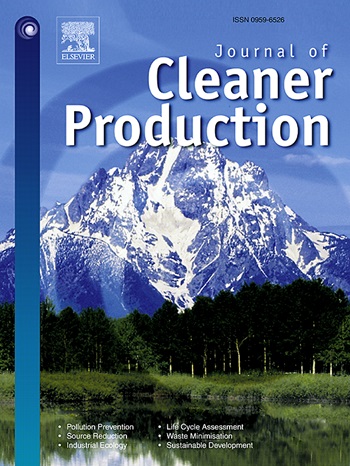Research on the impact of digital inclusive finance on regional carbon emissions: Based on the sustainable green innovation of small and medium-sized enterprises
IF 9.7
1区 环境科学与生态学
Q1 ENGINEERING, ENVIRONMENTAL
引用次数: 5
Abstract
Global climate change governance necessitates financial empowerment to address this worldwide challenge. This study integrates critical components such as sustainable green innovation in small and medium-sized enterprises(SMEs), industrial agglomeration, and regional innovation into the analytical framework of digital inclusive finance(DIF) and regional carbon emissions. Using China as a case study, we analyze data from 30 provinces (excluding Tibet, Hong Kong, Macau, and Taiwan) between 2013 and 2021, as well as data from 235 prefecture-level cities and microdata from companies listed on the New Third Board. Conducted through the dynamic panel model of the Generalized Method of Moments (GMM), empirical tests reveal that DIF acts as a mitigating factor in regional carbon emissions, with sustained green innovation of SMEs playing a crucial intermediary role. However, enterprises lean towards strategically viable green innovation, which has lower thresholds and higher practicality compared to substantive green innovation. Additionally, our findings show that industrial agglomeration and regional innovation further enhance the suppressive impact of DIF. Heterogeneity tests indicate that deeper and more digitized digital inclusive finance yields superior results in reducing regional carbon emissions, while non-resource-based cities outperform others in terms of carbon emissions. Based on these conclusions, we propose the following policy recommendations: governments should actively promote DIF and encourage green innovation in SMEs to curtail carbon emissions. Further efforts should be made to foster industrial agglomeration and regional innovation, reinforcing their impact on carbon emissions reduction. Raising the bar for green innovation and guiding enterprises towards substantive green practices is crucial, while tailored support should be provided to non-resource-based cities. This study offers valuable insights for policy formulation and green innovation implementation by governments and enterprises alike.数字普惠金融对区域碳排放的影响研究——基于中小企业可持续绿色创新
全球气候变化治理需要金融赋权,以应对这一全球性挑战。本研究将中小企业可持续绿色创新、产业集聚和区域创新等关键要素整合到数字普惠金融(DIF)和区域碳排放的分析框架中。以中国为例,我们分析了2013年至2021年间30个省份(不包括西藏、香港、澳门和台湾)的数据,以及235个地级市的数据和新三板上市公司的微数据。通过广义矩量法(GMM)的动态面板模型进行实证检验,发现DIF在区域碳排放中起着缓解作用,中小企业的持续绿色创新在其中起着至关重要的中介作用。然而,企业更倾向于战略可行的绿色创新,与实质性的绿色创新相比,战略可行的绿色创新门槛更低,实用性更高。此外,产业集聚和区域创新进一步增强了DIF的抑制作用。异质性检验表明,深度和数字化程度越高的数字普惠金融在减少区域碳排放方面效果越好,而非资源型城市在减少碳排放方面表现优于其他城市。基于以上结论,本文提出以下政策建议:政府应积极推动中小企业绿色创新,减少碳排放;进一步促进产业集聚和区域创新,增强其对碳减排的作用。提高绿色创新门槛,引导企业进行实质性绿色实践至关重要,对非资源型城市应提供有针对性的支持。本研究为政府和企业的绿色创新政策制定和实施提供了有价值的见解。
本文章由计算机程序翻译,如有差异,请以英文原文为准。
求助全文
约1分钟内获得全文
求助全文
来源期刊

Journal of Cleaner Production
环境科学-工程:环境
CiteScore
20.40
自引率
9.00%
发文量
4720
审稿时长
111 days
期刊介绍:
The Journal of Cleaner Production is an international, transdisciplinary journal that addresses and discusses theoretical and practical Cleaner Production, Environmental, and Sustainability issues. It aims to help societies become more sustainable by focusing on the concept of 'Cleaner Production', which aims at preventing waste production and increasing efficiencies in energy, water, resources, and human capital use. The journal serves as a platform for corporations, governments, education institutions, regions, and societies to engage in discussions and research related to Cleaner Production, environmental, and sustainability practices.
 求助内容:
求助内容: 应助结果提醒方式:
应助结果提醒方式:


